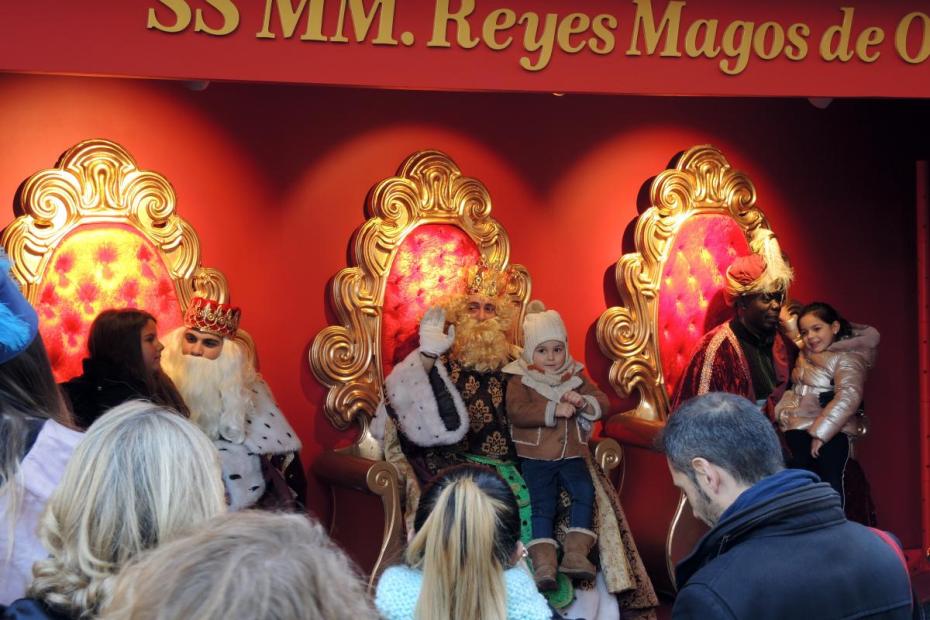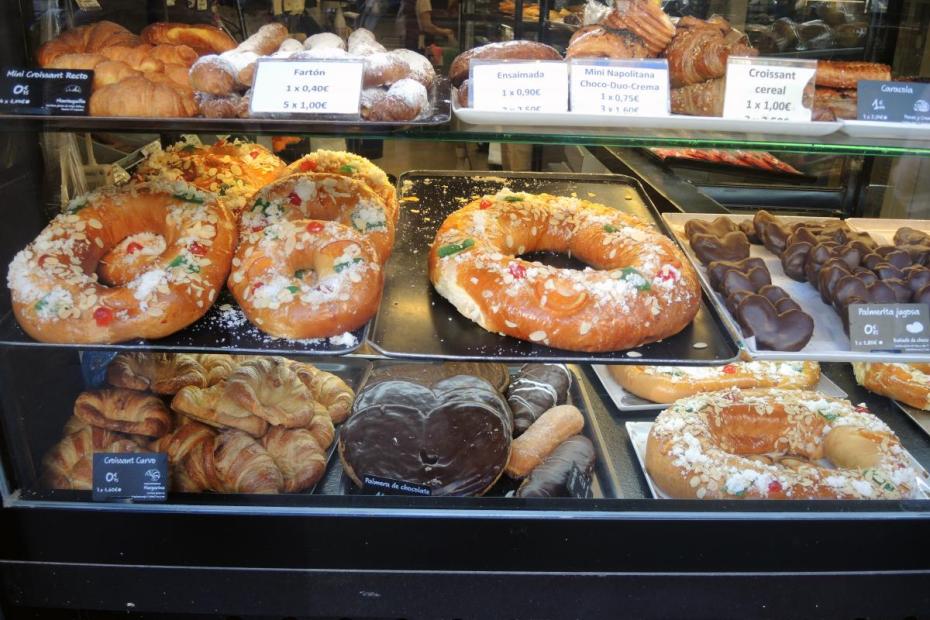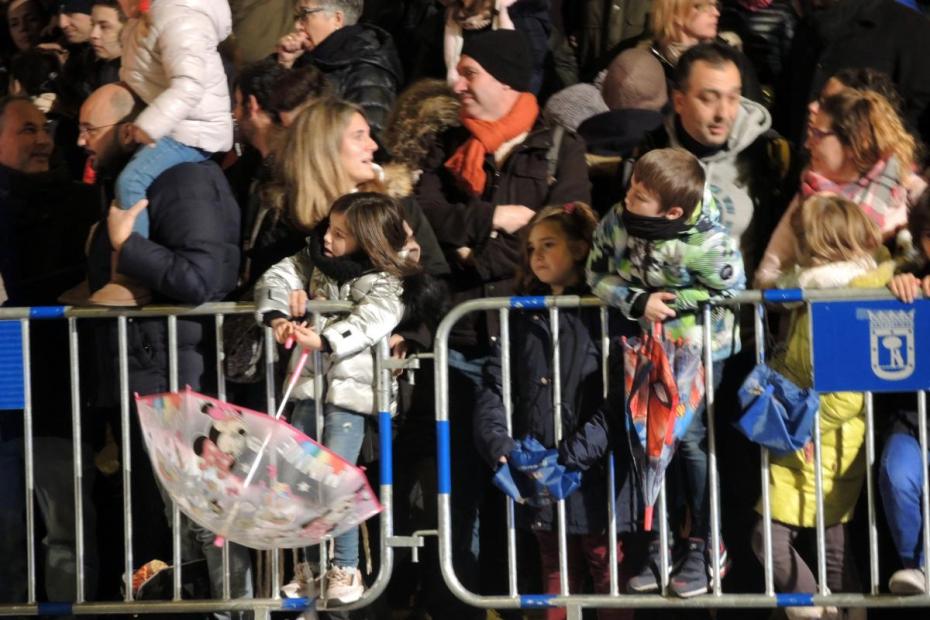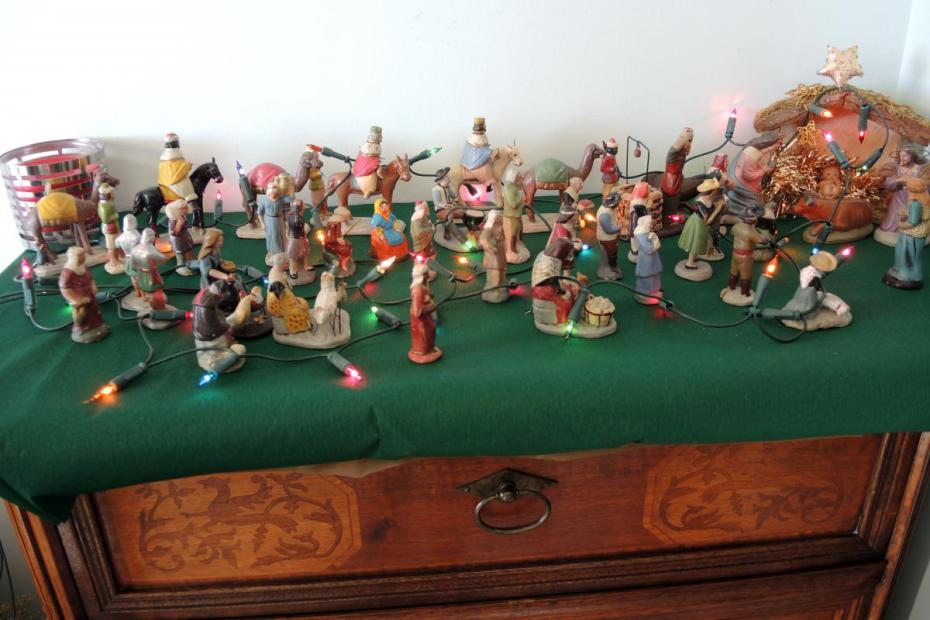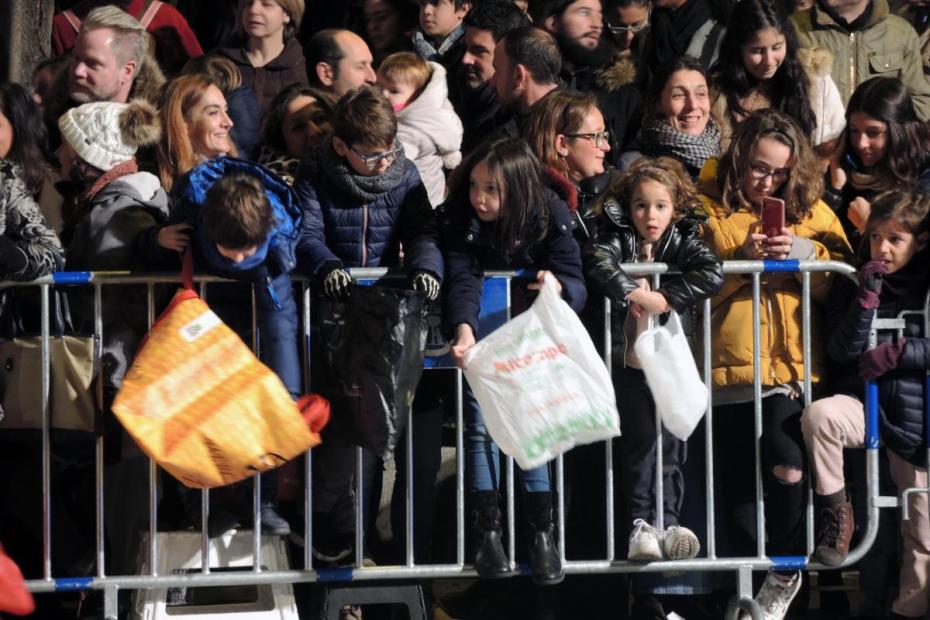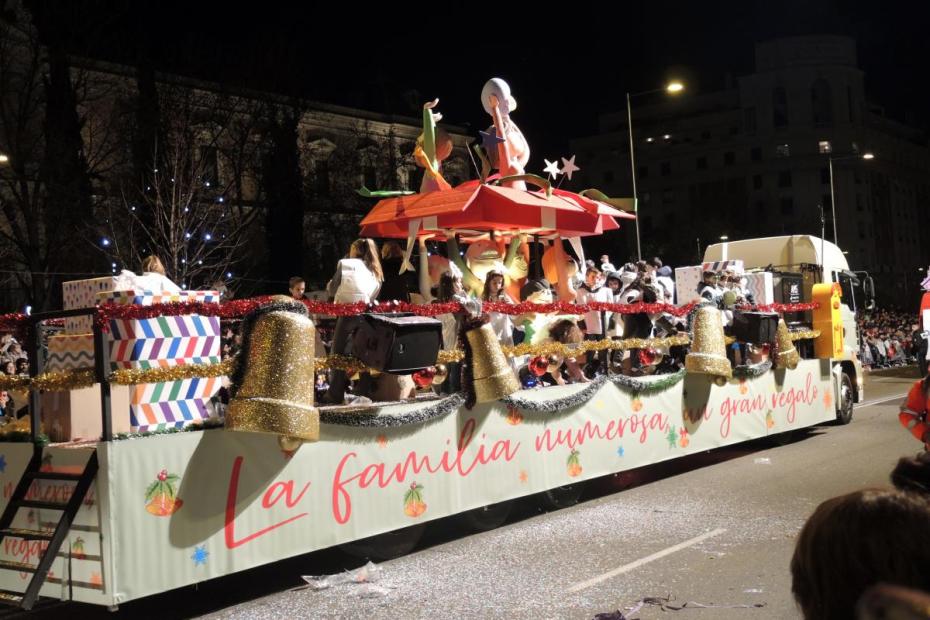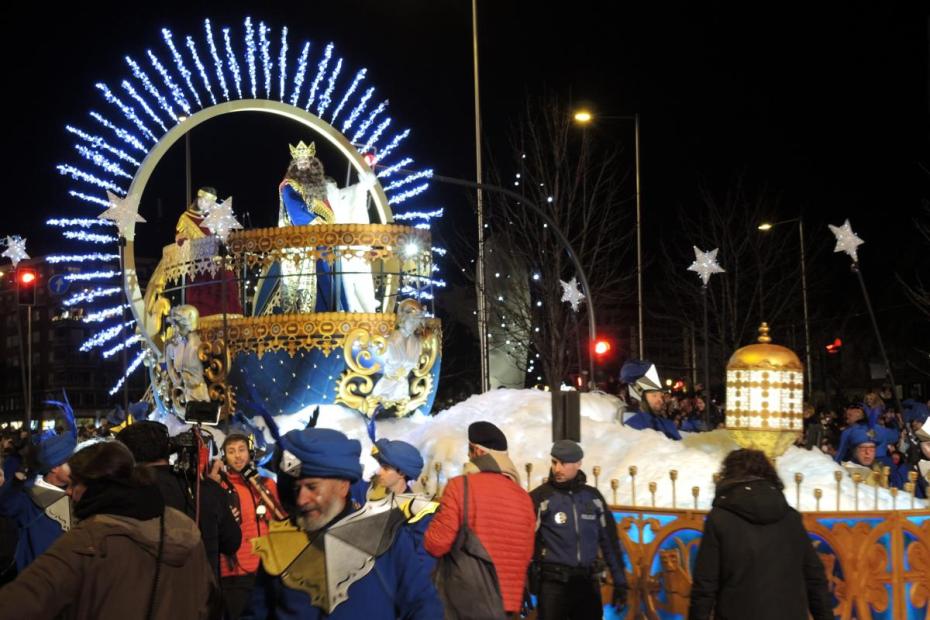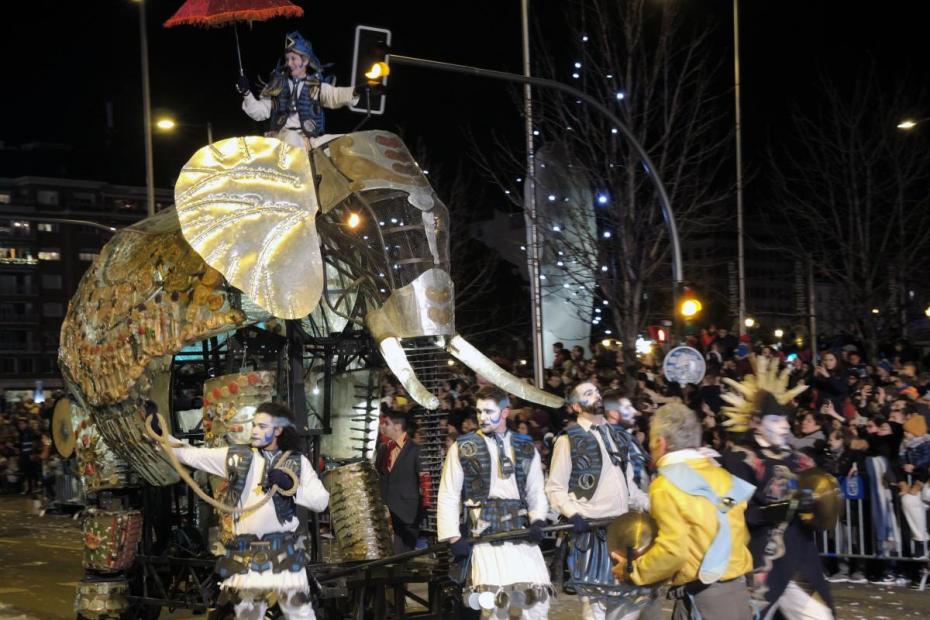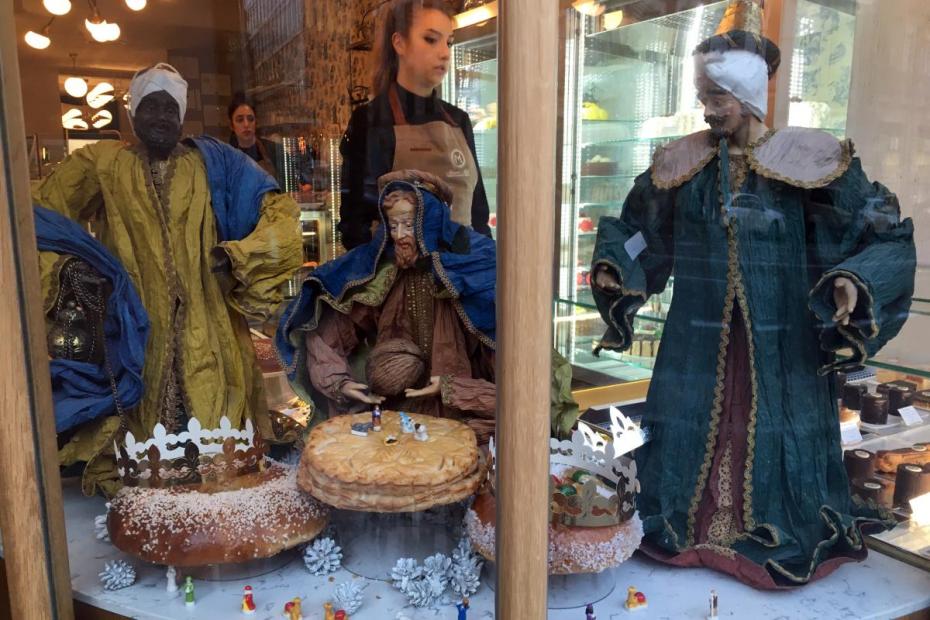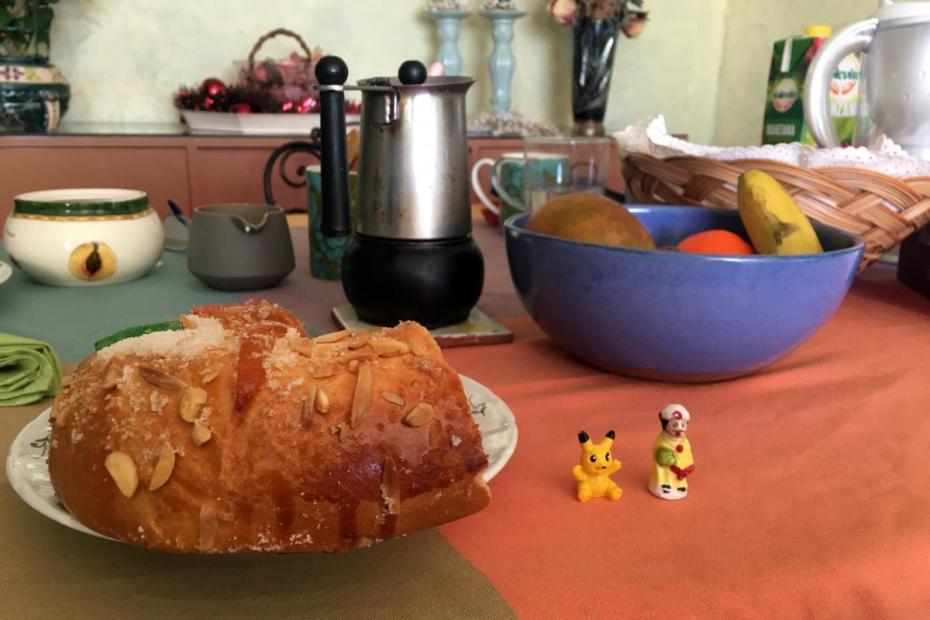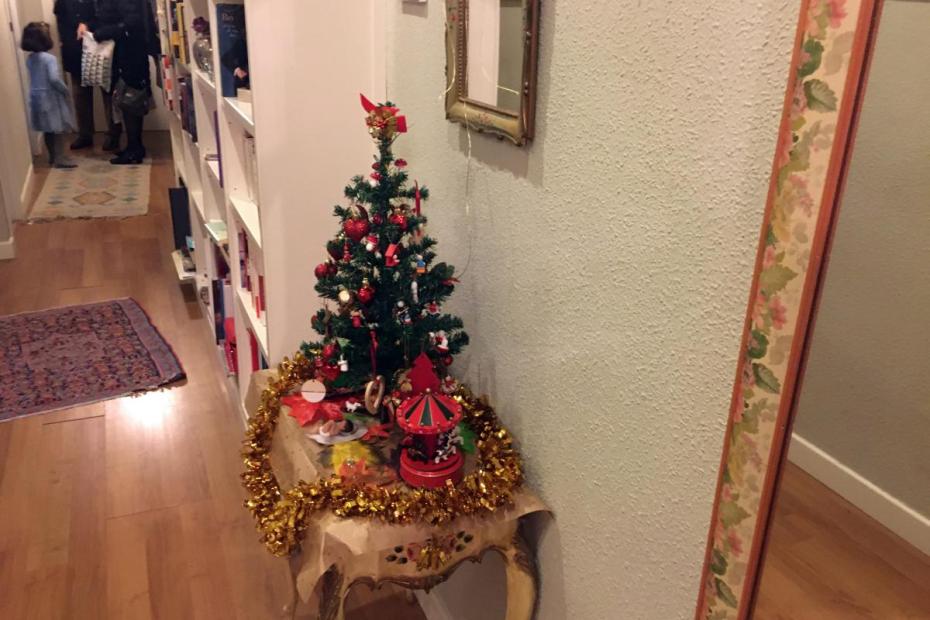In contemporary Spain, especially in cities like Madrid, the secular and commercial trappings of Northern European/American Christmas have begun to compete with the Spanish traditions. Still, in terms of public manifestation, even among more secularized people, the most visible, ritualized celebration of the Nativity of Jesus occurs not on December 25, but on the twelfth day of Christmas, January 6, the feast of Epiphany—the Día de los Reyes Magos, or Feast of the Three Kings.
The feast recalls the events described in Matthew 2:1-11, when magi (sometimes translated as wise men or astrologers) brought the newborn Jesus gifts of gold, frankincense, and myrrh. The biblical account doesn’t actually specify that there were three magi, or name them, or specify that they were men or kings, but later Christian tradition filled in those details, naming the visitors Casper, Melchior and Baltazar—in Spanish, Gaspar, Melchor y Baltasar.1
At least until recently, Christmas trees, Santa Claus and gifts were not part of the Spanish way of celebrating Christmas. Three Kings was, and is, the day for giving gifts. That has enabled Christmas to remain a much quieter day, largely spared from commercialism and from being turned into a children’s holiday.
For the most part, the shopping season for Three Kings begins right after Christmas. Bakeries begin to display the roscón de reyes, the ring-shaped, candied sweet bread served on the feast. At a number of locations, including outside department stores, booths appear on Noche de Reyes, as Epiphany eve is called, for children to visit the three kings and to give them the list of gifts they would like to receive that night.
Cabalgata and the gifts of the kings
In Madrid, as in many other cities, the grandest event of Noche de Reyes is the cabalgata, a cavalcade, or parade. Though its star characters are the Three Kings of Christian tradition, it is very much a civic affair, morphed, as it has been in its whole history, to the goals of particular governments. In 2019, the socialist city government, taking advantage of the fact that the Bible does not identify the kings’ gender, paraded three queens instead. In 2018, one neighborhood parade in Madrid even replaced the kings with drag queens. In 2020, a more conservative city government was happy to highlight that the parade had been returned to its “traditional” roots, though the parade, according to the official brochures handed out at the parade, emphasized that the Three Kings were there to embody the “spiritual character and humanistic basis in three universal values: beauty…science…goodness, as a synthesis of all human values.”
Along the boulevard parade route, people eager for front row spots often arrive by 3 p.m. By 5 p.m. the route is crowded with families, and by 7:30 it is packed, though much more with adults than children.2 Television crews broadcast the whole of it for those who stay home. A total of 30 groups or floats pass by in the parade, led by the municipal police on horseback. Today many of the groups are also commercial—Disney, TV stations and the major department store sponsor entries along with the usual dance, police, EMT, and civic groups, even a Real Madrid team float. The most interesting addition in 2020 is a float filled with children sponsored by the Asociación de Familias Numerosas de Madrid (Association of Large Families), which sends a different political and social message than the prior year’s government had. Ecclesial figures and groups are nowhere to be found (nor do older people remember these as a part of the parade in their youth). Those parading in almost every group toss candy or other little gifts. An extraordinary amount of candy is tossed to the crowds before the parade is over, and adults as much as children call out to have it thrown to them. Children tend to line the frontmost spots. Some of them use an inverted open umbrella to catch the candy.
The Noche de Reyes cabalgata in Madrid, Spain, in 2020.
In the last nine floats and marching groups are the Three Kings, their camels, elephants and attendants. Spanish traditions have it that the kings came representing Europe, Asia and Africa. The symbols around each in the parade represent that to this day. Until 2015 the person dressed as Balthazar was a white man (usually a city councilor, since city councilors are invited to serve as the kings) in blackface, but that was changed after a petition circulated to end the practice. In an era of greater concern for animal rights, the parade featured no actual camels or elephants, but large diaphanous representations of these carried by dancers. The program explained that the real animals were in someone else’s care for the moment.
Those who remember cavalcades from decades ago say that they were once much simpler, with far less emphasis on candy. Most of the attention went to the kings, their camels, attendants and a truckload of pretend gifts behind them. Even then, as they remember it, churchmen and ecclesial groups were not involved.
That night, when children go to bed, they leave empty shoes on the windowsill and leave three small dishes to feed the camels and three small drinks for the kings. Traditionally, the kings filled the shoes with candy, but today the presents, and the wish lists, have gotten bigger.
The next day, children have a chance to open their gifts, and sometime during the day extended families gather for hot chocolate and the roscón de reyes, the ring-shaped bread with candied fruit on top. Each roscón de reyes has a small figurine—often one of the three kings—baked somewhere inside, and it’s a bit of a game to see who gets that figurine in his or her piece. Tradition had it that the person who won that honor had to pay for the roscón de reyes. Gifts that day only come ostensibly from one of the Three Kings, and are not otherwise widely exchanged among family. By American Christmas standards, the gifts are quite modest, though some older Spaniards say it is too much, and was all that the children really think about the day.
Sacred and secular
The extent to which this Three Kings celebration is really sacred or secular in the contemporary ritual is perhaps a matter of perspective. It is obviously a form of celebration that reflects a Catholic heritage. Yet one older man summed up his take on this at his family’s celebration when he commented about the parade and the family celebration, “we are supposedly a Catholic country.” Another family member who was quite self-consciously secular, on the other hand, seemed to put up with the rituals of the day only for the sake of his extended family. He wanted all gift-giving to be on December 24 and 25, from Santa, who he regarded as a wholly secular figure. To him, Three Kings was still a religious event, one that he would rather avoid.
Three Kings Day remains a holiday in every province of Spain, and children also even have January 7 off from school. But parents and grandparents commented on how commercial the cabalgata had become, and how many fewer children attended today. The Three Kings, of course, have not been abandoned, though their purpose in the civic events was recast from adoring of Jesus to embodying generic, “universal” values. Jesus was at best an implied, invisible presence in the rituals of the day. Parishes schedule Mass that day, but only one, and Catholics report that Mass attendance that day is only a habit of the most pious.
- 1Notably, too, the “epiphany” celebrated on this date is one of several epiphanies in the Bible, here manifest through the Magi bearing gifts—not, as in the Byzantine tradition, the epiphany manifest in the words of the Father during Jesus’ baptism in the Jordan.
- 2The account here is based on experience at the parade and with families in the 2020 celebration of Three Kings, Madrid. Thanks to Teresa Dolado Martin for her help with translation and introductions.
